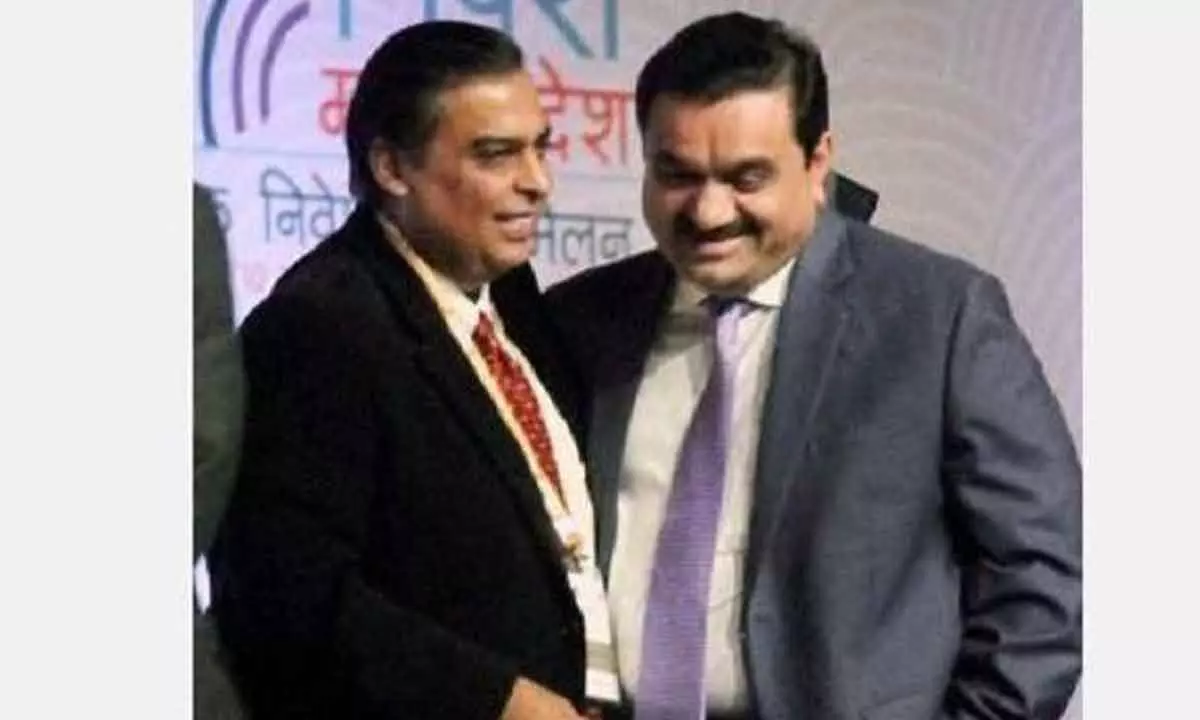Tie-up between RIL and Adani Group for MP power project raises high hopes
More collaborations likely due to liberalisation of power sector by the Union and state governments
image for illustrative purpose

The collaboration between two of the largest groups in the country is bound to provide a fillip to not only such cooperation, but also to other collaborative efforts, leading to even higher heights of success - RV Shahi
Power sector experts on Friday hailed the collaboration between the Mukesh Ambani-led Reliance Industries Limited (RIL) and the Adani Group, following RIL’s move to pick up 26 per cent stake in the latter’s power plant in Madhya Pradesh.
They claimed that it is one of the major chapters in India’s power sector, especially with its installed capacity of 4,28,000 MW and an ambitious plan to add 500,000 MW of renewable energy capacity by 2030.
Power sector experts hoped that many more such collaborations will take place in the wake of a further push by the Centre and many state governments to liberalise the sector.
As per the collaboration, RIL will purchase 26 per cent in Mahan Energen, a subsidiary of Adani Power, for Rs. 50 crore and procure 500 MW of electricity for the Madhya Pradesh plant.
According to Adani Power, one of the 600 MW capacity of the Mahan thermal power plant in Madhya Pradesh will be designated as a captive unit as per the stipulated norms.
Commenting on the development, former Power Secretary R.V. Shahi said, "The collaboration between two of the largest groups in the country is bound to provide a fillip to not only such cooperation, but also to other collaborative efforts, leading to even higher heights of success."
"What has been achieved post the Electricity Act, 2003 is more than three times of what was achieved during the 50 years prior to that," he added.
"This is the era of renewable energy, which is also facilitated by the de-licensing of power generation which took the growth in the power sector to a different orbit. By 2032, we are geared to achieve more 800,000 MW of capacity. The entire capacity could be doubled in the following 10 years after 2032, taking the capacity to more than 1,500 GW. This will be at the core of India’s development strategy of raising the GDP to $5 trillion and subsequently higher," said Shahi.
Ashok Khurana, Director General, Association of Power Producers, said "This collaboration has happened because of the liberalised captive power supply framework coupled with the change in transmission licensing system, where the consumers have been allowed transmission licences while the Central Electricity Regulatory Commission has simplified the procedures for the same. In fact, we will see many such collaborations coming up between the generators and the consumers."
Jayant Deo, a former member of the Maharashtra Electricity Regulatory Commission (MERC), asserted that the two top business houses of India collaborating in the power sector is a good omen for the country's march towards energy security.
Founder of the Independent Power Producers Association of India, Harry Dhaul, pointed out that such collaborations are positive steps for the growth of the Indian power sector from the energy security point of view.

